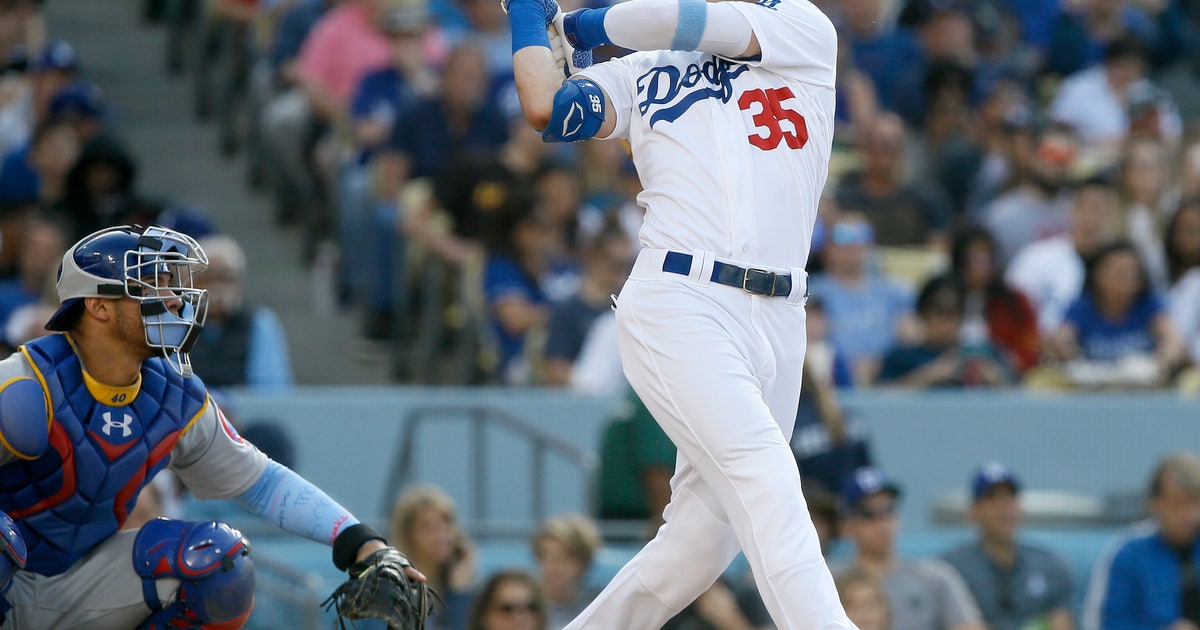AP analysis: MLB All-Star rosters could be youngest ever


NEW YORK (AP) — Major League Baseball and its fans are on the same page — they want to see more of the kids.
With millennial mashers Cody Bellinger and Christian Yelich leading the way, this year’s All-Star starting lineups have a chance to be the youngest ever, based on an Associated Press analysis of the latest ballot results released by the league this week.
The AP studied the average age for starting All-Star position players since the first Midsummer Classic in 1933, and this year’s group is almost certain to be historic, especially in the National League. The average age of the eight NL ballot leaders is just 25, a full year less than the previous youngest starting lineup, the 2017 American League roster.
When combined with the AL, this year’s projected starters average 26.6 years old — 0.2 older than the 2017 squads, which are the youngest ever. If 24-year-old Rays outfielder Austin Meadows edges 32-year-old Astros outfielder Michael Brantley, the average would fall to 26.3.
“For the young guys to represent and be talked about, it’s definitely really special to be a part of,” Meadows said.
The AP’s analysis was based on information pulled from Baseball-Reference.com, using players’ ages as of June 30 each year.
As recently as 2012, the average age of All-Stars elected by fans was over 30, but the years since have featured some of the youngest lineups in the game’s 86-year history. The reasons for that seem to be far-ranging, including the introduction of interleague play, improved scouting and player development, the popularity and accessibility of advanced statistics among fans, online balloting and social media.
“It’s a product of many, many trends intersecting in Major League Baseball going back 50 years,” said John Thorn, MLB’s official historian.
It’s no secret the significance of the All-Star Game has waned. Once an opportunity for rare, league-crossed matchups — think Joe DiMaggio vs. Warren Spahn, or Mickey Mantle vs. Juan Marichal — the game saw its appeal be undercut when interleague play began in 1997. These days, not only might Mike Trout see Clayton Kershaw once or twice a year, but those at-bats can be queued up on a computer or smartphone in seconds.
“I remember once upon a time,” Thorn said, “before interleague play, when the All-Star Game was designed in part to feature stars of the other league, the ones fans didn’t see all year. So Ted Williams and Stan Musial, even in their declining years, were placed on the All-Star teams because everybody wanted to see them, even when they were 40, 41, 42.
“Willie Mays, Hank Aaron. Where are your venerable stars? Is (Albert) Pujols going to have a spot on this year’s All-Star squad? I don’t know.”
Pujols and his 645 career homers are a long shot. The Angels veteran is sixth in AL balloting among first baseman, well behind leader Luke Voit, a Yankees slugger with 36 career homers.
It’s not just that viewers in both leagues have seen plenty of Pujols over his 19 seasons.
When a player like Voit or Angels second baseman Tommy La Stella — the surprising AL leader at second — break out in a big way, fans are faster than ever to notice.
“What we have is battalions of expert fans who can tell you what the WAR is over every player on a roster, and they want to see the very best,” Thorn said.
Another likely factor: MLB has pushed hard to promote its freshest generation. The league’s “Let The Kids Play” ad campaign is built around players like 21-year-old Ronald Acuña Jr. of the Braves and 25-year-old Alex Bregman from the Astros.
All-Star roster ages have dropped especially since MLB moved exclusively to online voting. Since the league did away with punch ballots at ballparks in 2015, the game has gotten markedly younger. That could be because older fans are less likely to vote online. It also allows players and teams to leverage social media to get elected.
Meadows, for example, has a full support system trying to get him elected. The Rays are pushing on Twitter and Instagram, and his family is flooding Facebook asking for support. Meadows himself went on MLB Network on Wednesday before a day game at Yankee Stadium.
“It’s crazy how you can just get out there,” he said.
This year’s voting will feature a new twist. MLB has partnered with Google to operate the voting, with the top three vote-getters at each position — top nine in the outfield — going to a special “starter’s election” beginning June 26 to determine the final lineups.
The game will be held July 9 in Cleveland.







